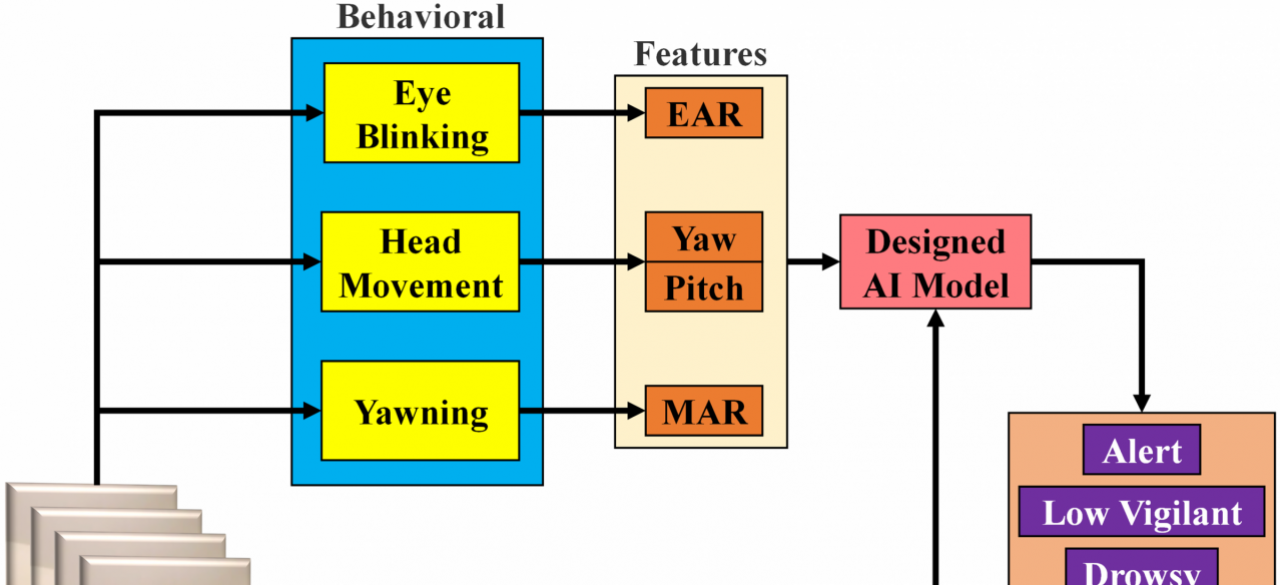Driver Drowsiness Analysis Based on Multiple Facial Features

ABOUT THE PROJECT
At a glance
Operating a motor vehicle while fatigued or sleepy is commonly referred to as “drowsy driving.” Drowsiness makes drivers less attentive, slows reaction time, affects a driver’s ability to make decisions. A driver might not even know when he or she is fatigued because signs of fatigue are hard to identify. Some people may also experience micro-sleep – short, involuntary periods of inattention. In the 4 or 5 seconds a driver experiences micro-sleep, at highway speed, the vehicle will travel the length of a football field. Drowsy driving is a serious traffic problem in the United States.
Our proposed work is based on behavioral parameters, which is a way to detect drowsiness based on a non-invasive method. Human drowsiness is measured by behavior parameters such as blinking, head position, facial expression, yawning, and eye-closing rate. We hope that this work can find innovative definitions via a combination of facial features, and the results of this research can advance the understanding of drowsiness. Ultimately, we hope it will lead to preventive measures to improve traffic safety.
| Principal Investigators | researchers | themes |
|---|---|---|
| Ching-Yao Chan | I-Hsi Kao | driver drowsiness, multiple facial features, detection by behavior parameters |

